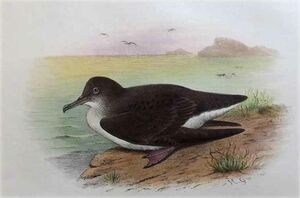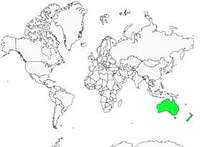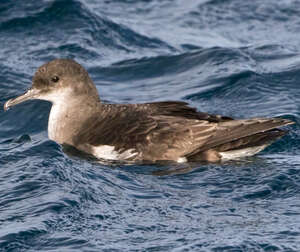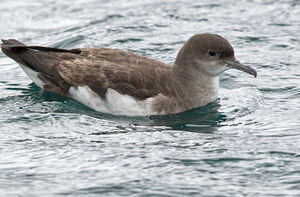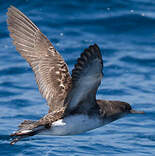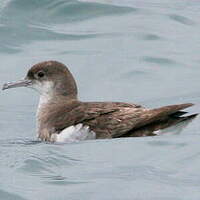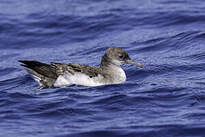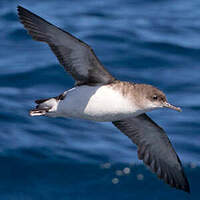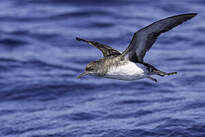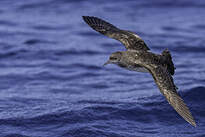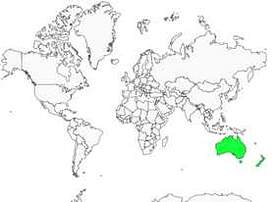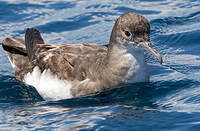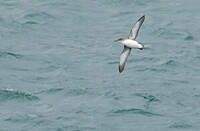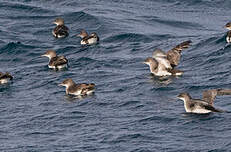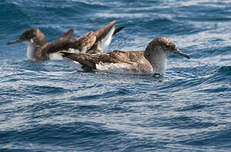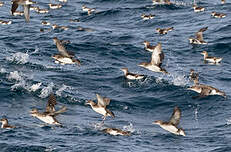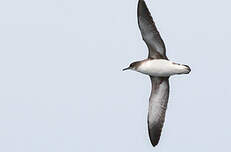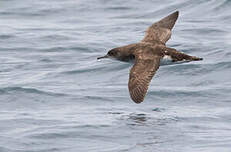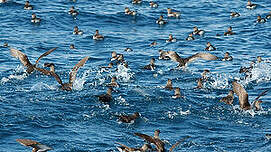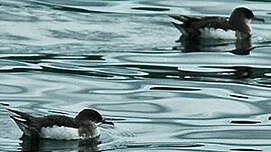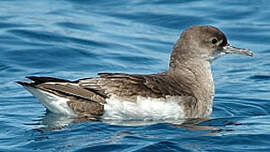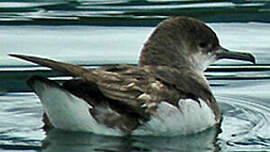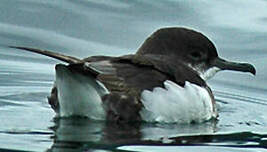Fluttering Shearwater
Puffinus gavia - Puffin volage
Identification
Medium-sized Shearwater resembling a Yelkouan Shearwater or Ashy Shearwater. Upperparts uniformly dark brown but with white patch on the edge of the wing (in fact it is the flanks). Underparts are white apart from a large dark patch at the tip of the wing. When it is in worn plumage, the bird appears paler; during the moult of the remiges, a whitish band is visible on the secondary coverts. Bill is fine and tail is short. Legs and feet are rosy brown with darker webs.
Can be mistaken with the Hutton's Shearwater (Puffinus huttoni) with which it occasionally forms mixed flocks. The latter is slightly larger and, above all, presents a significantly darker underside of the wings.
Subspecific information monotypic species
Foreign names
- Puffin volage,
- Pardela gavia,
- fura-bucho-neozelandês,
- Flattersturmtaucher,
- Vlinderpijlstormvogel,
- Berta frullina,
- nyazeelandlira,
- Flagrelire,
- víchrovník trepotavý,
- buřňák třepetavý,
- Skærskråpe,
- uudenseelanninliitäjä,
- baldriga de Forster,
- burzyk nowozelandzki,
- Буроспинный буревестник,
- ミナミミズナギドリ,
- 棕嘴鹱,
- nyazeelandlira,
- 鼓翼鸌,
Voice song and call
Habitat
Behaviour character trait
Flight
Dietfeeding habits
Reproduction nesting
Geographic range
Threats - protection
IUCN conservation status
concern
in the Wild
threatened
evaluated
The Fluttering Shearwater has suffered greatly from the introduction of predatory mammals on the islands where it reproduces. The efforts of the authorities and protection associations of New Zealand have enabled at least fifteen islands to be rid of these exotic mammals (mainly rats and cats). An attempt to create a new colony (through the transportation of chicks) on an island without predators began in 1991; and by 1995, couples were successfully nesting there.
Often captured by fishermen (even recreational anglers). No exact population count is known for this species, but it is likely to be in the tens of thousands of pairs.
Sources of information
- IOC World Bird List (v15.1), Gill, F and D Donsker (Eds). 2025-12-07.
- Albatrosses, Petrels and Shearwaters of the World, Onley Derek et Scofield Paul
- Field Guide to New Zealand Seabirds, Parkinson Brian
- Seabirds, an identification guide, Harrison Peter
- The hand guide to the birds of New Zealand, Robertson Hugh et Heather Barrie
- Vol. 1 - Handbook of the Birds of the World, Josep del Hoyo-Andrew Elliot-Jordi Sargatal
- Avibase, Lepage Denis
- BirdLife International, BirdLife International
Other sources of interest
 Specification sheet created on
04/08/2023 by Georges Olioso
Specification sheet created on
04/08/2023 by Georges OliosoTranslation by AI Oiseaux.net
© 1996-2025 Oiseaux.net
- Accipitriformes
- Aegotheliformes
- Anseriformes
- Apodiformes
- Apterygiformes
- Bucerotiformes
- Caprimulgiformes
- Cariamiformes
- Casuariiformes
- Charadriiformes
- Ciconiiformes
- Coliiformes
- Columbiformes
- Coraciiformes
- Cuculiformes
- Eurypygiformes
- Falconiformes
- Galliformes
- Gaviiformes
- Gruiformes
- Leptosomiformes
- Mesitornithiformes
- Musophagiformes
- Nyctibiiformes
- Opisthocomiformes
- Otidiformes
- Passeriformes
- Pelecaniformes
- Phaethontiformes
- Phoenicopteriformes
- Piciformes
- Podargiformes
- Podicipediformes
- Procellariiformes
- Psittaciformes
- Pterocliformes
- Rheiformes
- Sphenisciformes
- Steatornithiformes
- Strigiformes
- Struthioniformes
- Suliformes
- Tinamiformes
- Trogoniformes

